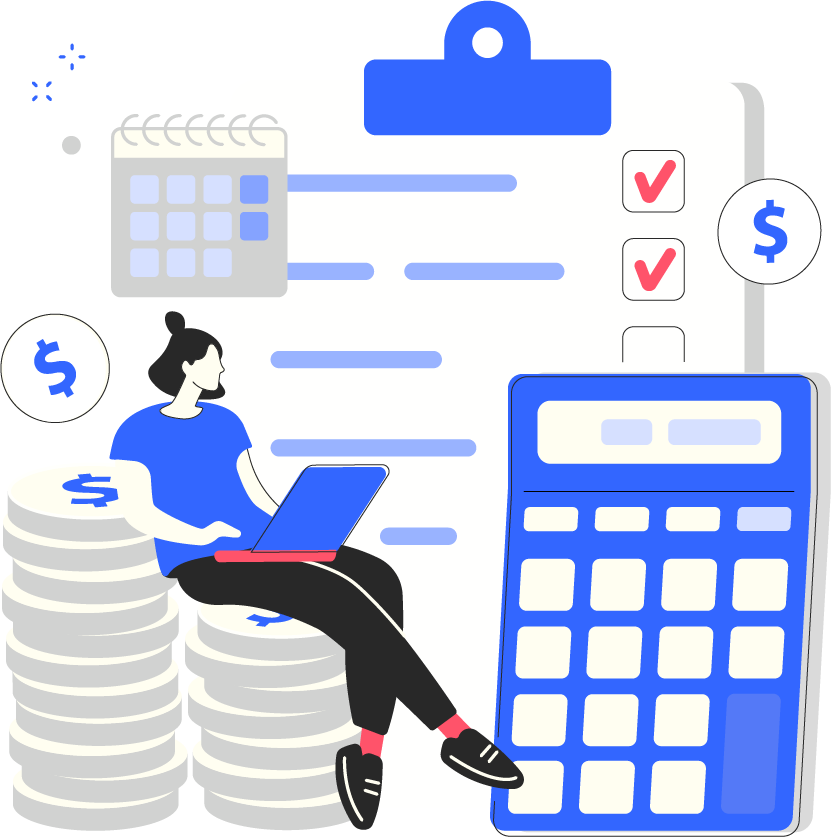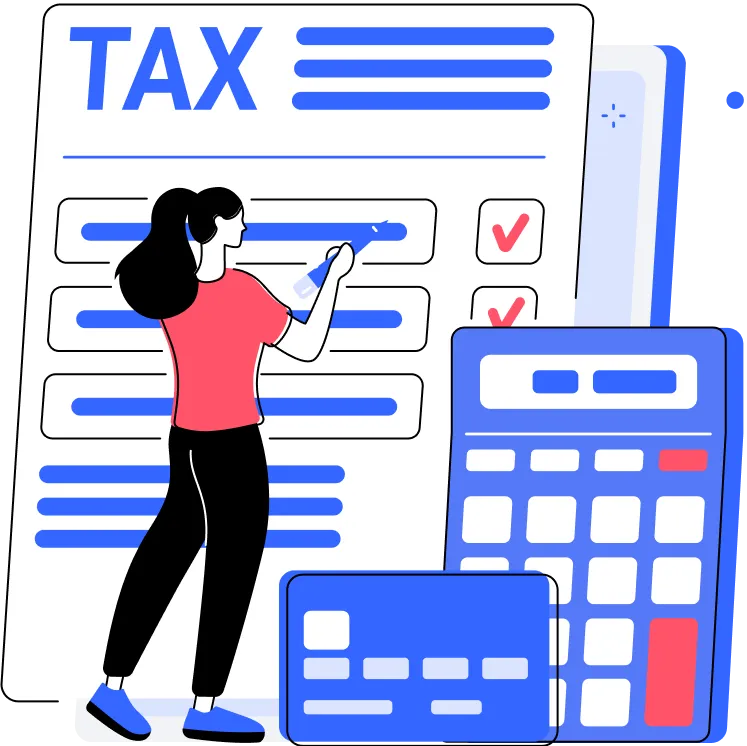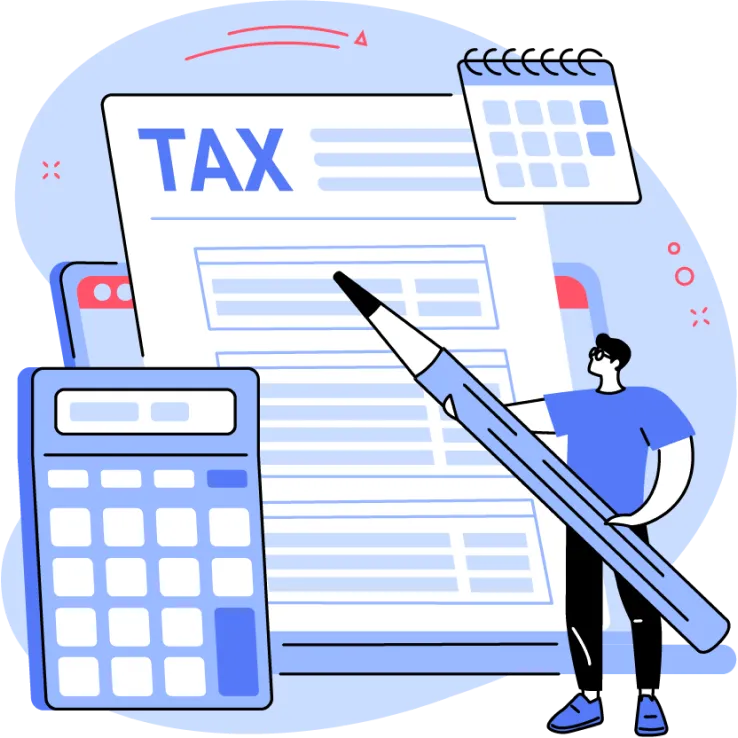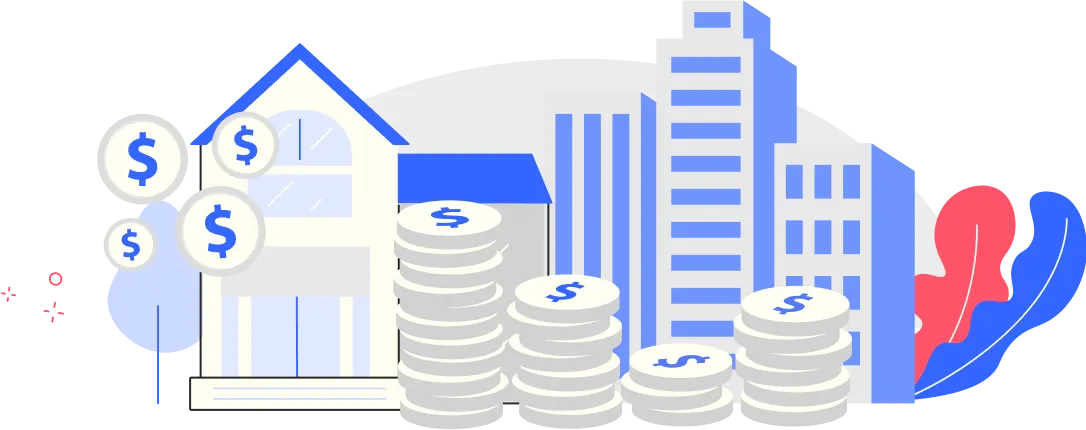Introduction
When it comes to personal finance, understanding the Canadian tax system is crucial. It can be complex, but with the proper guidance, you can easily navigate it. This guide covers all you need to know about taxes in Canada. We'll explain income tax rates, deductions, and credits.
We aim to provide a well-researched yet approachable and digestible resource to help you make informed financial decisions. In addition, mastering tax rates, deductions, and credits will help you build a solid financial knowledge foundation.
The Importance of Understanding Canadian Taxes
The idea of taxes was summed up perfectly by Benjamin Franklin. He said, "In this world, nothing is certain except death and taxes." But understanding general tax laws doesn't need to be stressful.
Understand
Criticality
Value
Why Do We File Taxes in Canada?
Paying taxes is essential for two reasons. First, doing so ensures we pay our fair share for public services such as education and universal healthcare.
Second, we must file income taxes to ensure we're not overpaying or underpaying. When we file tax returns, we let the government know how much we should have paid versus what we actually paid.

A Brief Overview of the Canadian Tax System
The Income Tax Act
If you need specific information about income tax, the ITA and ETA are your best resources. These documents explain why paying income tax is such a significant responsibility. They also explain in detail individual tax brackets and break down all laws surrounding Canadian taxes.
Role of the Canada Revenue Agency (CRA)
Who Needs to File Taxes in Canada?
Canadian Income Tax Rates and Brackets

Federal Income Tax Brackets
| Taxable income range | Tax rate on portion within range |
|---|---|
| First $50,197 | 15% |
| $50,197-$100,392 | 20.5% |
| $100,392-$155,625 | 26% |
| $155,625-$221,708 | 29% |
| $221,708+ | 33% |
To make things easier to understand, let's look at an example. Let's say that you earned $200,000 this year. The $200,000 will be subject to multiple tax brackets.
- The first $49,020 will be taxed 15% in the first tax bracket. So the total tax you'll pay on those first $49,000 will be $7,353.00.
- The second tax bracket is $40,020-$98,040 and has a tax rate of 20.5%. So for this next bracket, you'll pay $10,048.90.
- The third tax bracket is $98,041-$151,978 and is taxed at 26%. In this bracket, you'll pay $14,023.62.
- The fourth and final tax bracket calculates your remaining income of $64,533 at a tax rate of 29% for a total amount of tax of $18,714.57. Add all the numbers together to get a final tax bill of $50,140.09.
Remember that if you fall into the top tax bracket of earnings greater than $216,511, you'll be taxed at 33%. That's the highest tax bracket possible.
Basic Personal Amount (BPA)
Income tax rates vary from province to province. This is mainly due to each region's economic conditions, government priorities and social programs. All of these factors are unique to every province and territory.
Jurisdictions determine their own tax rates and brackets. This allows them to customize their taxation policies to meet their needs and objectives. Consequently, the differences in provincial/territorial income taxes reflect the diverse approaches to generating revenue and addressing local priorities.
Finding the Latest Tax Rates
Tax Deductions and Credits: Making Your Money Work for You

Basic Personal Amount (BPA)
Canada Workers Benefit (CWB)
Registered Retirement Savings Plan (RRSP)
RRSP Home Buyers' Plan
Another caveat is that the funds must be in the account for 90 days before withdrawal. Lastly, it is essential to remember that this Home Buyers' Plan is technically considered a loan. Therefore, you must repay the loan to the RRSP after two years. This can be done through annual payments over a maximum of fifteen years.
Tax-Free Savings Account (TFSA)
Other Notable Deductions and Credits
The Canada Employment Amount, the Disability Tax Credit, and the Medical Expense Tax Credit are available at the federal level. In addition, there are provincial and territorial credits, like the Ontario Trillium Benefit and the British Columbia Home Owner Grant.
Tax-Free Savings Account (TFSA)
The Canada Employment Amount, the Disability Tax Credit, and the Medical Expense Tax Credit are available at the federal level. In addition, there are provincial and territorial credits, like the Ontario Trillium Benefit and the British Columbia Home Owner Grant.

Goods and Services Tax/Harmonized Sales Tax (GST/HST)
Tax Rates by Province
| Province | GST | PST | HST | QST | Total |
|---|---|---|---|---|---|
| AB | 5% | 5% | |||
| BC | 5% | 7% | 12% | ||
| MB | 5% | 7% | 12% | ||
| NB | 15% | 15% | |||
| NL | 15% | 15% | |||
| NS | 15% | 15% | |||
| ON | 13% | 13% | |||
| PEI | 15% | 15% | |||
| QB | 5% | 9.975% | 14.975% | ||
| SK | 5% | 6% | 11% |
Other Common Types of Canadian Taxes

Property Taxes
Excise Tax
The Excise Tax Act includes provisions for licensing and registering businesses involved in producing, selling, or importing goods. It also provides measures to prevent tax fraud and evasion. In addition, the Canadian government regularly updates the Excise Tax Act to reflect changes in the economy and societal norms.
Understanding this legislation is essential for businesses operating in Canada to comply with their tax obligations and avoid potential penalties.
Tips & Tricks:
Filing Your Taxes
Choosing the Right Software or Professional Help
Your tax situation may be complex. Alternatively, you may prefer personalized guidance. In either case, seeking the help of a professional tax preparer or accountant is a wise choice.
Ask friends, family, or colleagues for recommendations for a reputable tax professional. Ensure they hold the proper certifications or designations, such as a Certified Public Accountant (CPA).
Community Volunteer Tax Clinics
Tax clinics are available to Canadians with simple tax situations. And some clinics limit their usage to those earning a lower income.
Deadlines and Penalties
Missing the filing deadline can lead to penalties and interest charges. The initial penalty is 5% of your balance owed. Furthermore, an additional 1% is charged for each month the return is late, up to a maximum of 12 months. Staying informed about tax deadlines and filing your return on time is essential to avoid these setbacks.
Maximizing Your Refund
Finally, keep accurate records of all tax-related receipts and documents throughout the year to ensure you can substantiate your claims.


Tax Planning Strategies for Canadians
Proactive tax planning can help you take advantage of the Canadian tax system. This will lead to long-term financial success and a secure financial future.
Income Splitting
Families can reduce their tax bills by taking advantage of income-splitting opportunities. These include spousal RRSP contributions, pension income splitting, and the Canada Pension Plan (CPP) sharing. This creates a more balanced distribution of taxable income.
Tax savings can help you build an emergency fund. It can also let you invest in your future goals. Lastly, it can provide you with a higher standard of living.
Investing in RRSPs and TFSAs
TFSAs offer tax-free growth on investments. This means you can withdraw your earnings without incurring any tax liability. Strategically using RRSPs and TFSAs can maximize your after-tax income. This can help you achieve long-term financial success and security within the Canadian tax system.
Other Tax-efficient Investments
On the other hand, corporate-class mutual funds are structured to minimize the distribution of taxable income by converting interest and dividend income into tax-deferred capital gains.
Frequently Asked Questions About Canadian Taxes
What is the difference between Canada's federal and provincial/territorial taxes?
In Canada, federal and provincial/territorial governments impose income taxes. Federal taxes are levied by the federal government and apply uniformly nationwide. In contrast, provincial/territorial taxes are determined by individual provinces and territories, resulting in varying rates and brackets depending on your location.
How can I find Canada's latest tax rates and federal and provincial/territorial tax brackets?
To access the most up-to-date information on federal and provincial/territorial tax rates and brackets, visit the Canada Revenue Agency (CRA) website or subscribe to their updates. Additionally, consult your respective provincial or territorial tax authority’s website for region-specific tax details.
Are there any tax credits or deductions specific to college students in Canada?
Yes, Canadian college students can benefit from several tax credits and deductions, such as the tuition tax credit, which allows you to claim eligible tuition fees paid for post-secondary education. Additionally, students may claim interest paid on government student loans and credits for textbooks and public transit expenses, where applicable.
What is the deadline for filing personal income tax returns in Canada, and what are the penalties for late filing?
The general deadline for filing personal income tax returns in Canada is April 30th each year, while self-employed individuals and their spouses or common-law partners have until June 15th. Late-filing penalties start at 5% of your balance owing, plus an additional 1% for each month the return is late, up to a maximum of 12 months.
What are the main benefits of investing in RRSPs and TFSAs for tax purposes in Canada?
RRSPs and TFSAs are tax-advantaged savings vehicles that provide unique benefits for Canadian investors. RRSP contributions are tax-deductible and allow for tax-deferred growth until withdrawal, typically at a lower tax rate in retirement. TFSAs offer tax-free growth on investments, enabling you to withdraw earnings without tax liability. Strategically using these accounts can help maximize your after-tax income and support long-term financial success.
Conclusion
Recap of Key Points
Additionally, stay informed about tax-filing deadlines and penalties, as missing the deadline can result in costly consequences. Finally, consider seeking the guidance of a tax professional or utilizing tax preparation software to streamline the process and ensure accuracy.
Take Control of Your Finances
Additionally, staying informed about the Canadian tax system and seeking opportunities to optimize your tax planning can help you maximize your after-tax income and achieve long-term financial success.
By taking control of your finances and adopting a strategic approach to money management, you can build a solid financial foundation and achieve your goals, whether saving for retirement, buying a home, or pursuing higher education.
Credit Tips
Depending on your circumstances, you may consider incorporating your business as a small business owner, as incorporated companies pay a lower tax rate. However, there are other expenses and risks to bear as an incorporated business, so complete a cost-benefit analysis with a trusted financial advisor.
Cite this article
Creditpicks. (2023). Taxes. Creditpicks. https://www.creditpicks.com/explore/taxes/
